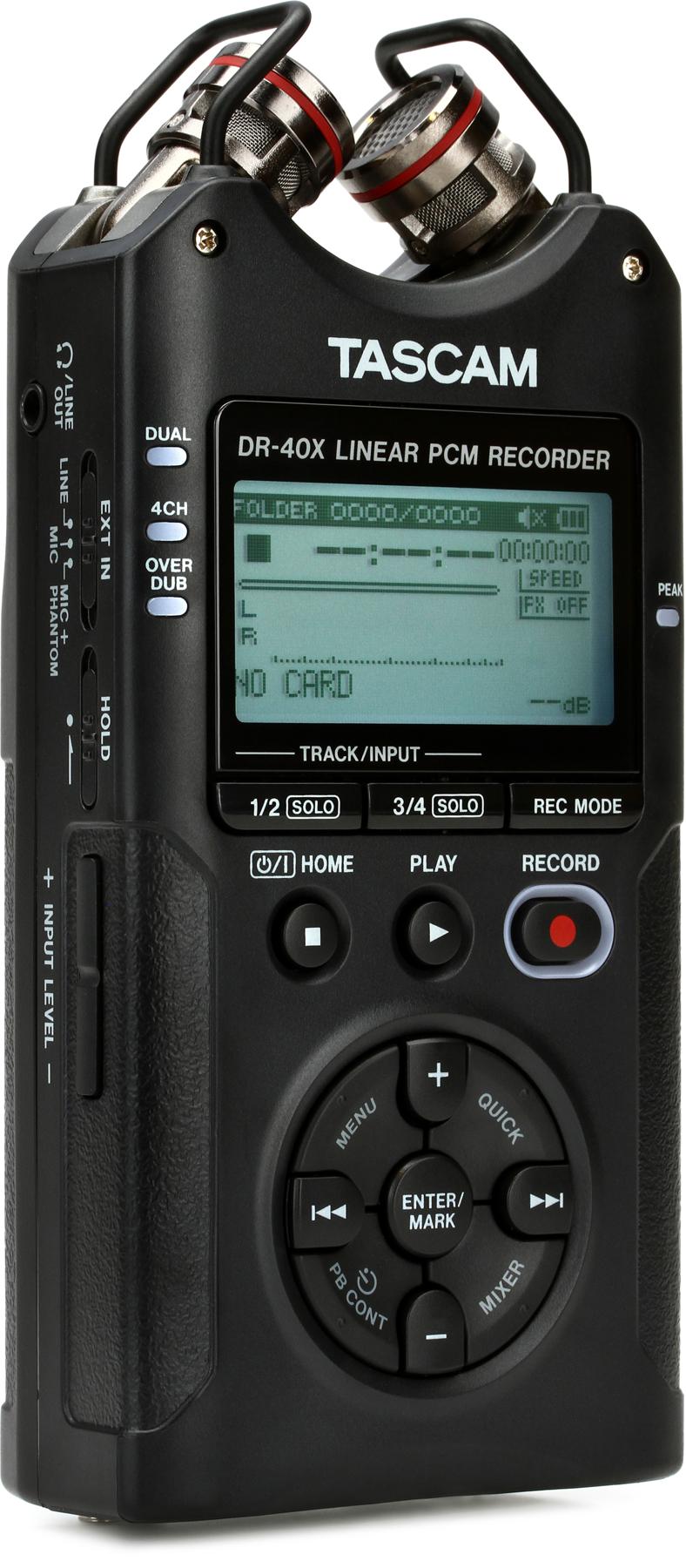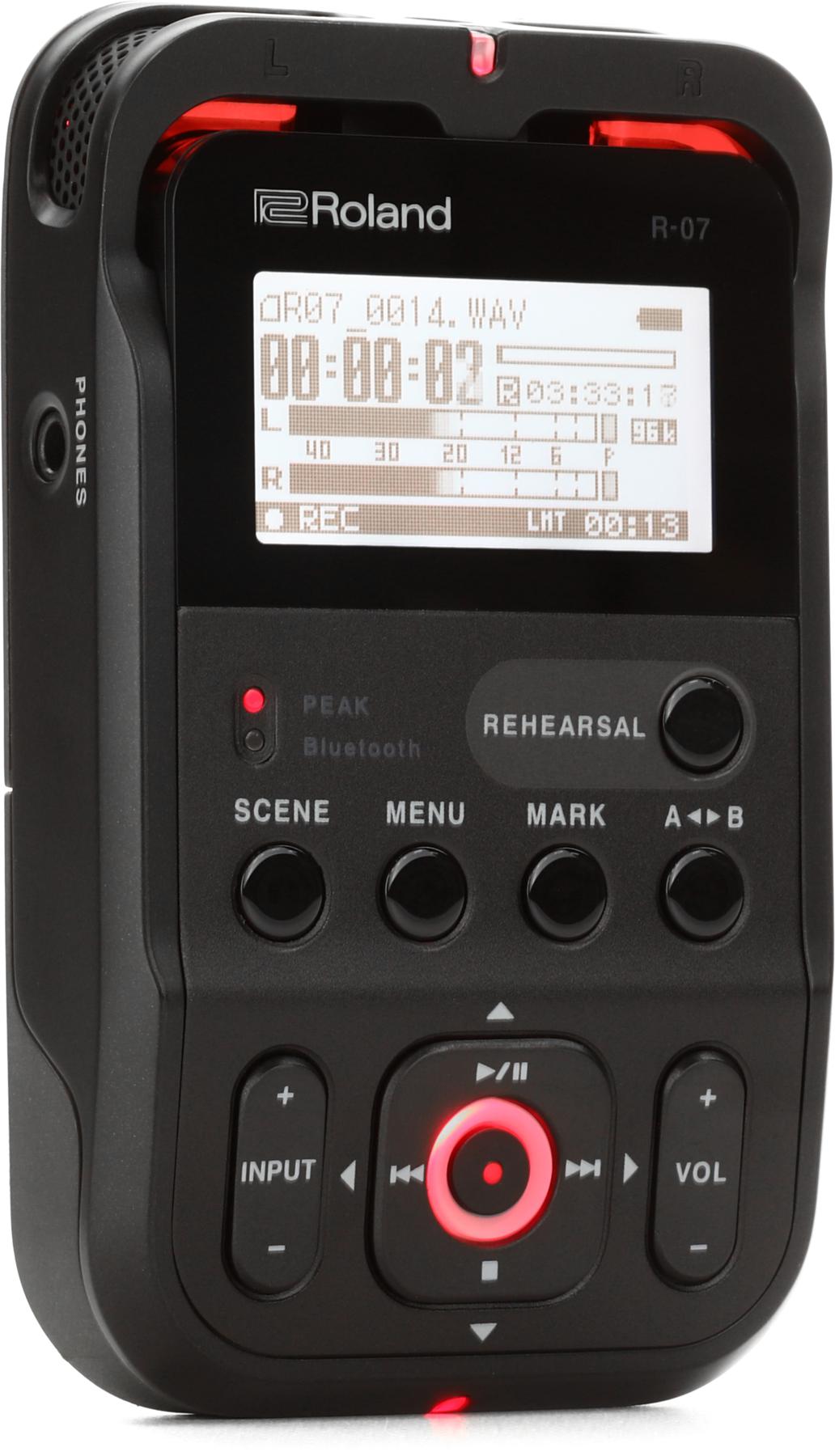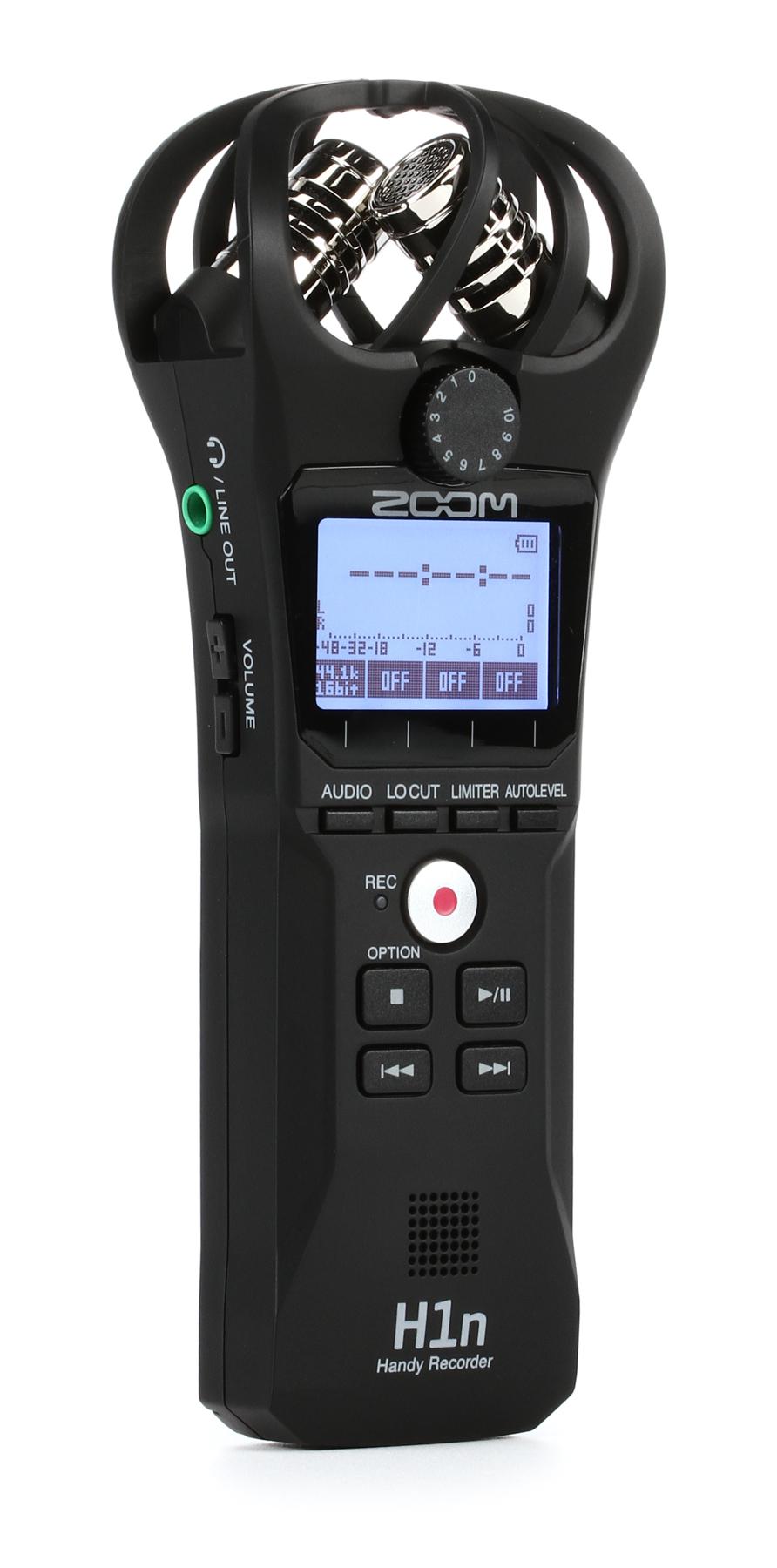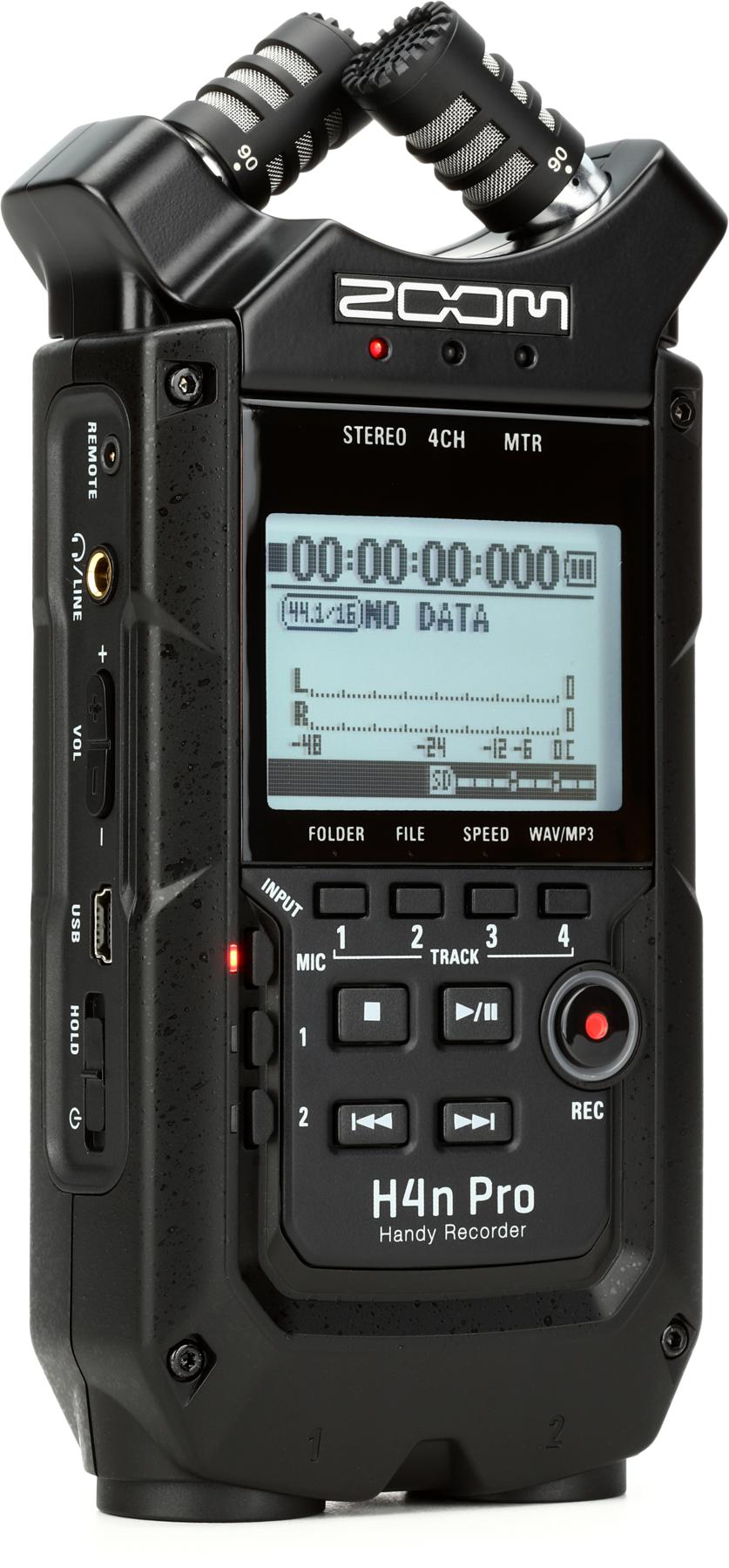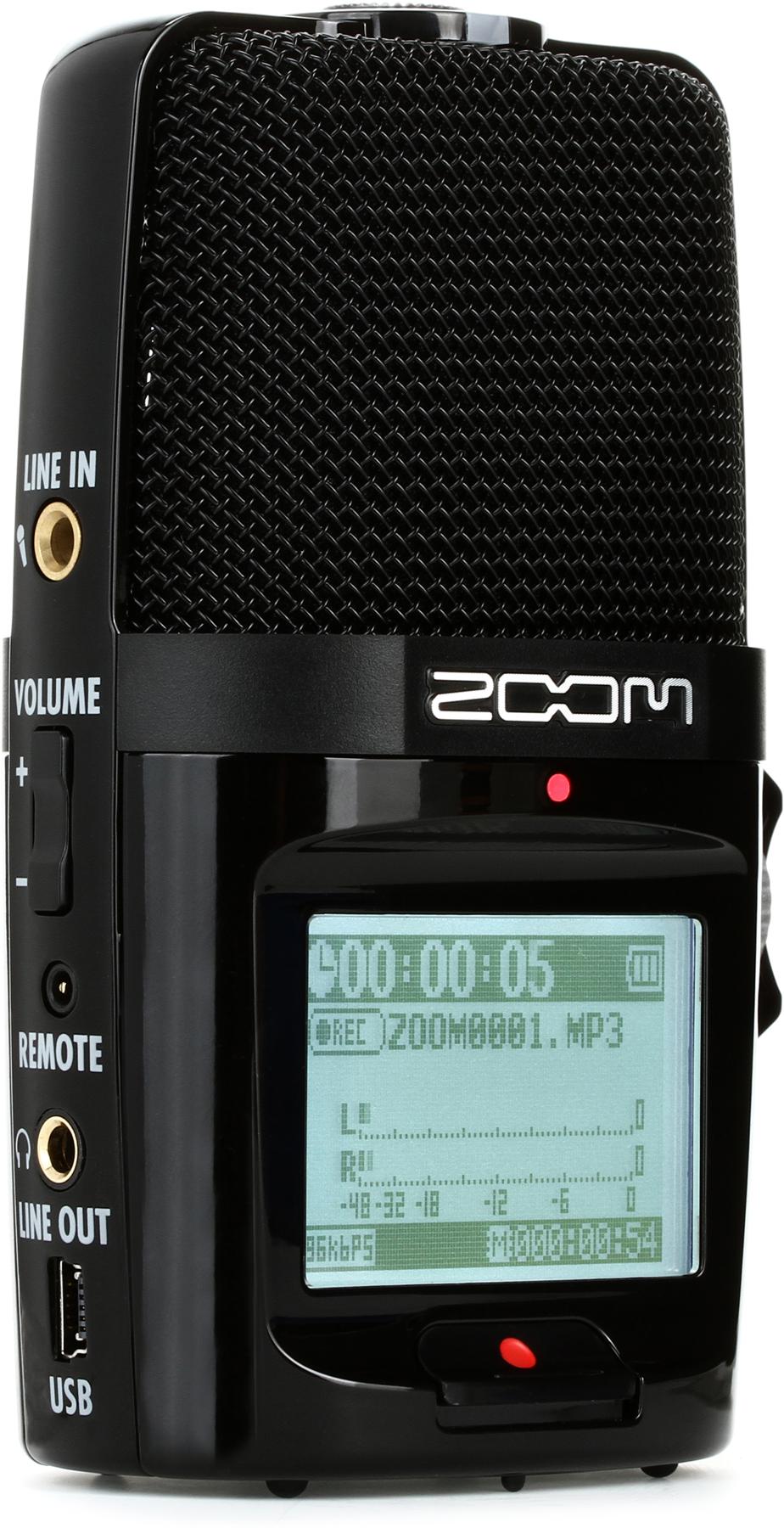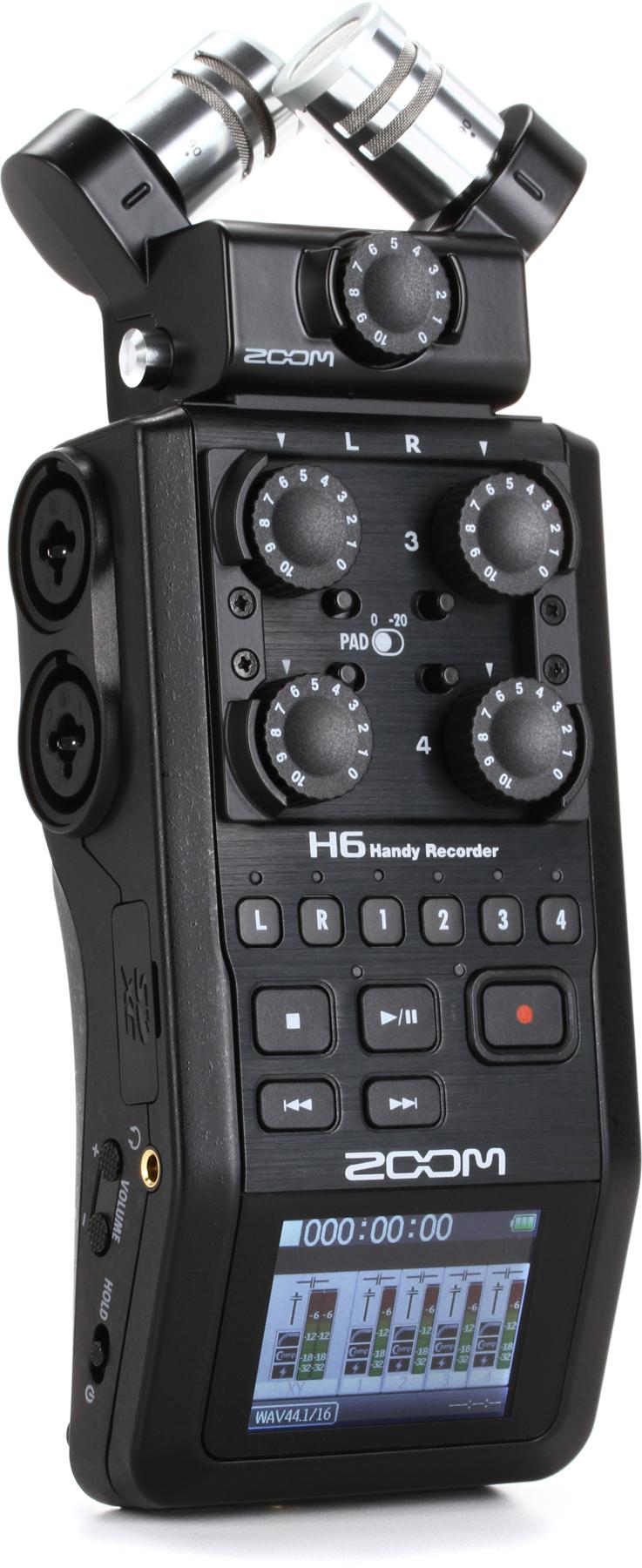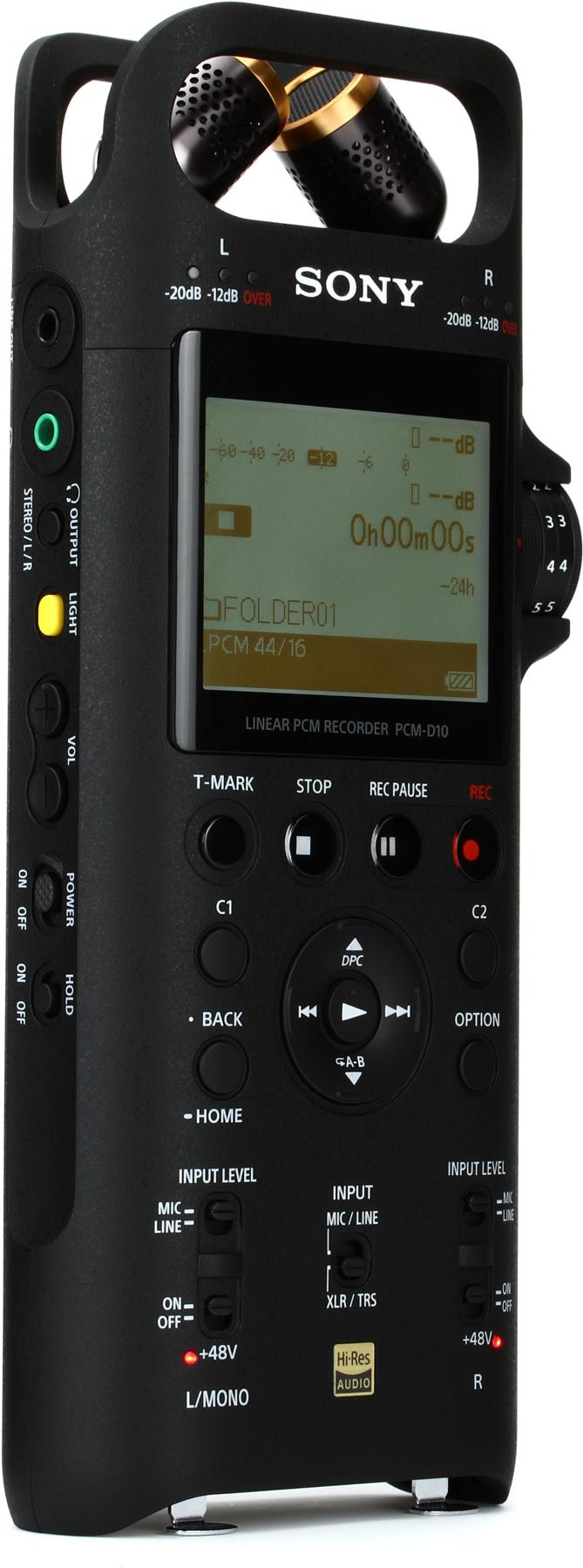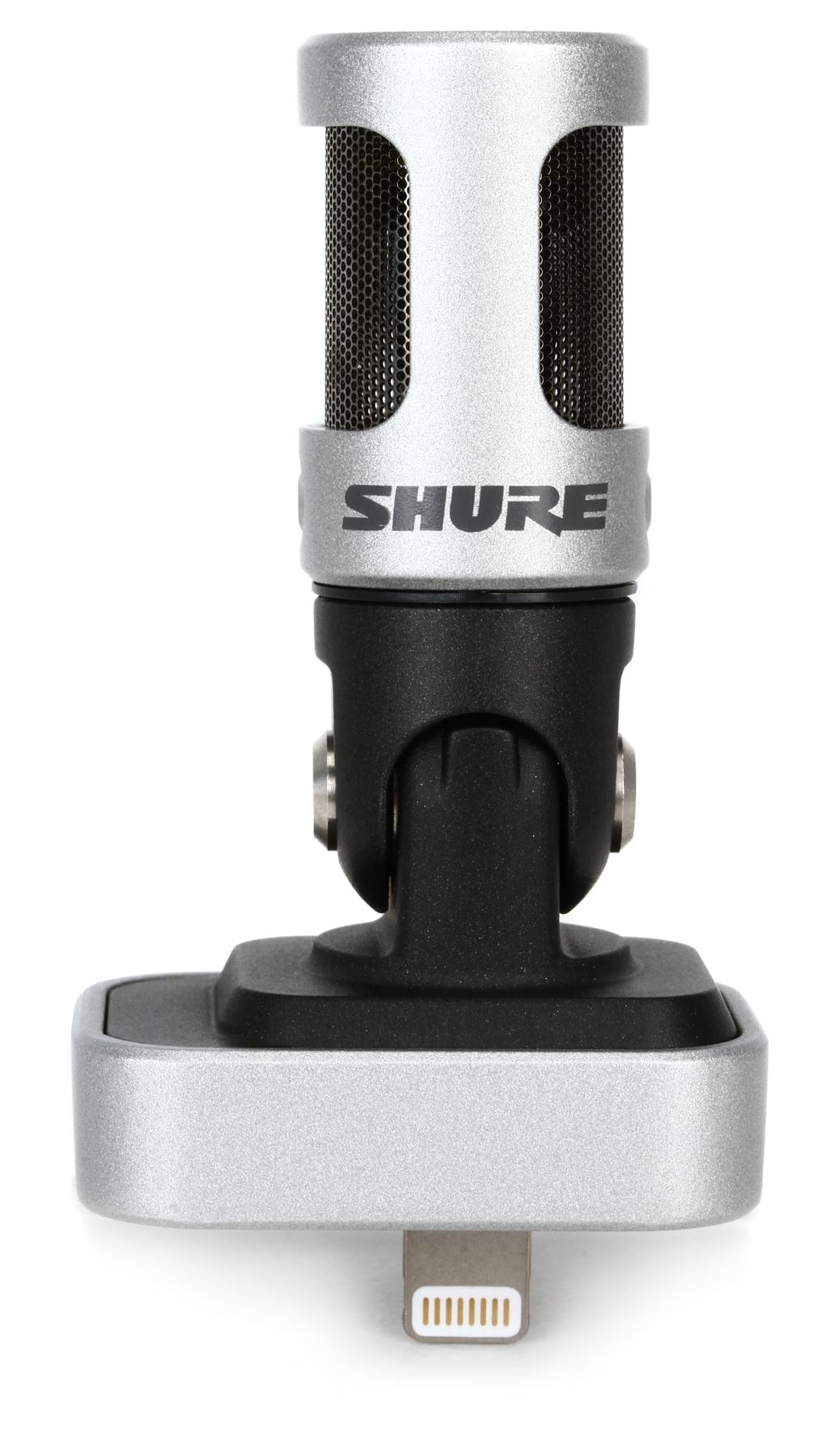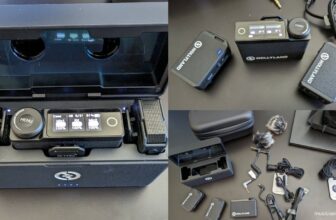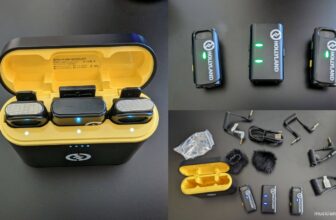The 10 Best Field Recorders (2024)
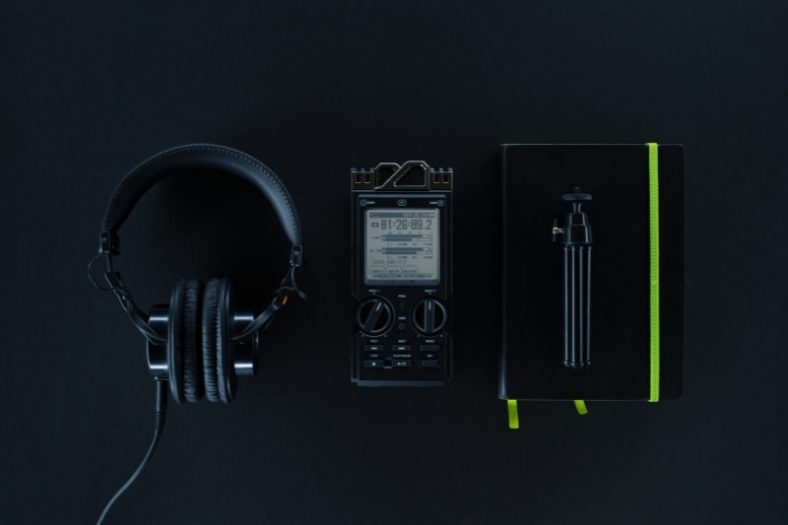
Field recorders are great devices for recording music ideas, sound effects, or ambiance outside the studio. Equipped with multitrack recording and effect options, field recorders are highly practical for producers, sound designers, and musicians on the go in the mobile world.
There are many great options for different budgets with impressive features that would not make you miss your studio environment. Having a field recorder around is a life-saver to record a live performance, ambiance, sound effects, or musical ideas.
My top pick is the industry-standard model Tascam DR-40X, thanks to its great features for quality and easy recording, long battery life, and relatively affordable price.
If you want a more affordable option, you can check my budget pick, Zoom H1n, the famous 2-track field recorder with a great value for the offered price.
Contents
- The 10 Best Field Recorders (2024)
- 1. Tascam DR-40 X
- 2. Zoom H1n
- 3. Zoom H4n Pro
- 4. Roland R-07
- 5. Zoom H2n
- 6. Zoom H6
- 7. Tascam DR 100 MkIII
- 8. Sony PCM D-10
- 9. Shure Motiv MV88
- 10. Sound Devices MixPre-6 II
- How to use a field recorder?
- What are field recorders used for?
- How to choose a field recorder?
- Can you turn your phone into a portable field recorder?
- Are field recorders durable?
- How much memory do you need?
- Do recordings on field recorders sound any good when played back?
- Verdict
The 10 Best Field Recorders (2024)
And now onto the full list:
1. Tascam DR-40 X
The Tascam DR-40X is a great 4-channel field recorder, designed especially for musicians with handy features such as the tuner, basic mix facility, built-in effects, and 2 balanced XLR inputs. You can use the recorder with additional mics, a mixer, or as an audio interface with its USB 2.0 port.
Pros
- Great features like tuner, built-in effects, mix facility
- Can be used as an audio interface
- 2 Balanced XLR inputs
- Relatively affordable
Cons
- Plastic case
The recorder is equipped with uni-directional condenser mics that can fully open to adjust the ideal angle for recording. Furthermore, it has 6 reverb effects, a tuner, a peak reduction feature, and a limiter for clean recording and sonic versatility.
| Recording Tracks | 4 |
| Storage Medium | SD, SDHC SDXC (up to 128GB) |
| Resolution max. | 96 kHz/24 Bit |
| Power Feed | 3 AA Batteries, USB bus, AC Adapter |
| Battery Life (Alkaline) | 16 hours |
There is nothing much to say against this recorder as it comes with great features for musicians for an affordable price. Some people might not like the plastic case, but it makes the recorder more portable. Overall, the Tascam DR-40x is a great recording gear.
2. Zoom H1n
One of the most sold field recorders on the market today is the Zoom H1n, thanks to its simple and portable design, handy features, affordable price as well and versatile and good-quality sound. The 2-track recorder features two X-Y mics and up to 96 kHz/24-bit audio resolution.
Pros
- Great value for the price
- Portable and compact design
- Easy to use
Cons
- Does not support SDHX card
It is one of the most affordable field recorders on the market, and it shines with its value-for-price ratio. It is portable, and its compact design is great to use only with one hand, and the design is quite versatile, you can use it on a tripod, with a camera, on the ground, or however you like.
| Recording Tracks | 2 |
| Storage Medium | SD – SDHC (up to 32 GB) |
| Resolution max. | 96 kHz/24 bit |
| Power Feed | 2 AA Batteries, USB Bus, AC adapter |
| Battery Life (Alkaline) | 10 hours |
Of course, the budget-friendly Zoom H1n has some drawbacks as it features a relatively short battery life, only a 2-track recording option, and a storage capacity of only up to 32 GB without SDHX support. But, for the price range, it is an ultimately hard-to-beat recorder.
3. Zoom H4n Pro
The Zoom H4n Pro is a great and popular all-purpose 4-track field recorder with handy features, especially for musicians. It comes with many built-in effects and amp models and 2 balanced XLR inputs with phantom power on top of the dual X-Y condenser mics for recording outside the studio as well as in the studio as an audio interface.
Pros
- Great features for musicians like built-in effects and amp models
- Can be used as an audio interface
- 2 Balanced XLR inputs with phantom power
- Ability to save audio files as mp3 to save space
Cons
- The X-Y mics are limited to a 90-120-degree angle range
The recorder offers a high-pass filter, compressor/limiter, delay, and reverb effects, along with several amp models for musicians. Furthermore, it allows you to save audio files as mp3 files to save space on the card.
| Recording Tracks | 4 |
| Storage Medium | SD – SDHC (up to 32 GB) |
| Resolution max. | 96 kHz/24 bit |
| Power Feed | 2 AA Batteries, USB Bus, AC adapter (AD-17) |
| Battery Life (Alkaline) | 8 hrs |
It works with 2 AA batteries, USB power, or the separately sold AC adapter. The only letdown of the device is its relatively short battery life which ranges between 6 to 10 hours. Besides that, the Zoom H4n is a great and versatile recorder for musicians, sound engineers, or videomakers.
4. Roland R-07
The Roland R-07 is a compact, lightweight, and portable 2-track field recorder with a simple design and long battery life. It comes with a smartphone app connected to the device through Bluetooth for distance control. It works with dual AA batteries providing 16 hours of recording time.
Pros
- Highly compact and portable
- Easy-to-use simple design
- Bluetooth connectivity and app integration
- Long battery life
Cons
- No X-Y microphones
- No XLR inputs, only 2-channel recording
It is a highly easy-to-use device with a Rehearsal button for choosing the preset and starting recording. The recorder has 10 preset scenes, which fine-tunes the device for different recording needs. Furthermore, it allows you to loop and change the speed of parts of your recordings.
| Recording Tracks | 2 |
| Storage Medium | SD, SDHC (up to 32 GB) |
| Resolution max. | 96 kHz/24 bit |
| Power Feed | 2 AA Batteries, USB bus |
| Battery Life (Alkaline) | 16 hours |
In short, the Roland R-07 is a portable and practical field recorder for everyday use. It does not have extra features like X-Y mics or extra XLR inputs, but rather it is a simple device to carry around and use the moment you want.
5. Zoom H2n
The Zoom H2n is one of the most used recorders of the brand as it is equipped with 4 mics in total with an M/S recording system with many handy features like a built-in speaker, EQ, compression, limiter, and long battery life. It also comes with the WaveLab LE software.
Pros
- Total of 4 microphones, M/S recording
- Feature-packed with built-in speaker, limiter, low-cut, EQ, compression
- Long battery life
- WaveLab LE included
Cons
- Accessories are sold separately
- The 4-channel mode does not support 96 kHz
The M/S recording system is great for recording bands and live performances as the Mid mic acts as the center channel. In contrast, the side mics add ambiance and directionality, allowing for a 360-degree recording.
| Recording Tracks | 4 |
| Storage Medium | SD, SDHC (up to 32 GB) |
| Resolution max. | 96kHz/24-bit |
| Power Feed | 2 AA Batteries, USB bus, AC adapter |
| Battery Life (Alkaline) | 20 hours |
The only letdowns are that the side accessories are not included in the price, and the 4-channel mode does not support 96 kHz but instead 48 kHz resolution.
6. Zoom H6
The Zoom H6 is one of the highest-quality field recorders of the H series, with up to 6 channel recording options with 4 XLR inputs. It comes with sensitive mics and preamps along with many valuable features like different compressors, limiters, built-in speakers, and playback speed options.
Pros
- 6-channel recording with 4 XLR inputs
- Sensitive, noise-free pre-amps and mics
- Feature-packed
- Comes with Cubase LE and Wavelab LE
- The package includes handy accessories
Cons
- A bit pricey
The H6 acts as a USB interface or as a dedicated field recorder with 4 AA batteries which provide power for up to 20 hours of recording time. Furthermore, it comes with XYH-6 X/Y capsule, MSH-6 MS capsule, USB cable, sponge windscreen, and Cubase and Wavelab LE software to start producing music or editing audio immediately.
| Recording Tracks | 6 |
| Storage Medium | SD, SDHC, SDHX up to 128 GB |
| Resolution max. | 96kHz/24-bit |
| Power Feed | 4 AA Batteries, USB bus, AC adapter |
| Battery Life (Alkaline) | 20 hours |
Although a bit pricey, the Zoom H6 is one of the best field recorders out there for musicians, sound engineers, video and filmmakers, as well as anyone who needs to record audio on the go.
7. Tascam DR 100 MkIII
The Tascam DR 100 MkIII is a stereo field recorder with high-resolution audio support of up to 192 kHz. It provides pristine audio-quality recordings through its directional mics or any mic you use through the two XLR inputs the device features.
Pros
- Pristine audio quality with high-resolution
- Has 2 XLR inputs and 2 directional mics
Cons
- Only stereo recording
It is a great recorder if you are looking for the highest audio quality for an affordable price, but it is not the best gear for music production. It can’t be used as an audio interface, and you can only use it for stereo recording, so overdub recording is not supported.
| Recording Tracks | 2 |
| Storage Medium | SD, SDHC, SDHX up to 128 GB |
| Resolution max. | 192kHz/24-Bit |
| Power Feed | 2 AA, USB Bus, AC Adapter |
| Battery Life (Alkaline) | 12 hours |
Overall, the Tascam DR 100 MkIII is a good high-resolution recorder with decent battery life for live performance, casual recording, or video makers.
8. Sony PCM D-10
The Sony PCM D-10 is a high-end, top-notch stereo field recorder with many handy features for musicians, casual recordings, and video making. It is equipped with dual condenser internal mics that can be used in 3 different ways; XY, Zoom, and wide stereo, which records in 192 kHz resolution.
Pros
- Pristine audio quality with high-resolution
- 3-way adjustable internal dual microphones and 2 XLR inputs
- Bluetooth connectivity
- Physical knobs instead of virtual control
Cons
- Pricey
- Only stereo recording is available
Furthermore, the device has many great features making the recording process more accessible and reliable. The Bluetooth connectivity for playback and activation, along with many physical knobs, adds to the practicality of the recorder.
You can also use your own mics with the device as it features 2 XLR inputs. However, it can only record 2 tracks simultaneously.
| Recording Tracks | 2 |
| Storage Medium | SD/SDHC/SDXC (up to 128 GB) |
| Resolution max. | 24-bit/192kHz |
| Power Feed | 4 AA Batteries, USB Bus |
| Battery Life (Alkaline) | 32 hours |
In short, the Sony PCM D-10 is a great sound recorder with the highest sound quality and the great practicality it offers to the users. All of these features come at a high price as this one is a pricey product.
9. Shure Motiv MV88
The Shure Motiv MV88 is a great portable microphone for iOS devices that turns your smartphone into a field recorder with good audio quality. The Shureplus app provides more than enough sonic versatility, while the microphone offers rich lows and crispy highs for good quality and reliable recordings.
Pros
- Good mic with rich lows and crispy high frequencies
- Versatile with stereo-mono modes
- Shureplus app for presets and fine-tuning
Cons
- Does not work as a standalone recorder
- Only for iOs
- 48 kHz resolution
The Shureplus app has many presets and fine-tuning options like mic configuration and stereo width. The windshield sold separately is highly recommended for more stable recordings.
The downside of this device is, of course, that it is only made for iOS devices, and it does not function as a standalone recorder as the other gear on the list. The 48 kHz resolution is also relatively lower than the other field recorders.
| Recording Tracks | 2 |
| Storage Medium | Mobile Device |
| Resolution max. | 24 Bit / 48 kHz |
| Power Feed | Lightning Bus Power |
| Battery Life (Alkaline) | – |
Suppose you are an iOS user and looking to turn your smartphone or tablet into a good-quality field recorder. In that case, the Shure Motiv MV88 is a great choice that connects to your lightning port and provides decent-quality recordings for any kind of use.
10. Sound Devices MixPre-6 II
The Sound Devices MixPre-6 II is a top-quality field recorder with great specs for professional use. It features low-noise Kashmir microphone preamps, which work great even with high-gain levels, four XLR inputs, 192kHz/32-bit high-resolution recording, 8-in, 4-out USB audio interface, and mixer use option, and many more.
Pros
- Extremely quiet preamps, suitable to use with high gain
- 192kHz/32-bit high-resolution recordings
- Can be used as a recorder or a mixer
- The Musician Plugin
Cons
- Pricey
- No mics
For musicians, I recommend the Musician Plugin, which is sold separately and turns the device into a portable studio. It allows you to overdub, track bounce, punch in-out, and add reverb, and a metronome to your recordings. This means you can create whole songs without needing a DAW, just with the recording device whenever and wherever you want.
| Recording Tracks | 8 |
| Storage Medium | SD-SDHC-SDXC (up to 128 GB) |
| Resolution max. | 192kHz/32-Bit |
| Power Feed | 4 AA Batteries, USB Bus, AC Adapter, 8 AA battery expansion packs (sold separately) |
| Battery Life (Alkaline) | 1 hour |
There is nothing much to say against the Sound Devices MixPre-6 II as it is a great device for professional musicians, filmmakers, sound designers, podcasters, and basically anyone who needs to record audio professionally. It is a very pricey product, but it features almost the greatest specs a portable field recorder can have.
How to use a field recorder?
Field recorders are pretty straightforward devices. They often come with built-in mics, so you only have to locate it to a good position, adjust the gain levels, and presets, and press the record button to start recording. The audio will be saved on the SD card, which you can edit and mix later.
Most field recorders also feature XLR inputs for you to use with your microphones. Some also have presets and effects for more versatility which you can use for better recording quality. You can also use some recorders as audio interfaces combined with your DAW of choice.
What are field recorders used for?
Field recorders are used for recording audio outside the studio. They are used for recording live performances, jam sessions, or musical ideas outside the studio by musicians, as well as recording sound effects, ambiances, and voices by podcasters, sound designers, and movie makers.
How to choose a field recorder?
When choosing a field recorder, features you should look out for are track count, storage capacity, battery life and supply, portability, recording format and resolution, and extra features like the option of audio interfacing, interchangeable mics, or XLR input ports and digital effects.
At least 2 track counts will be necessary for stereo recording, but more channels will offer higher versatility and sound quality. The same goes for storage capacity, as more memory space means more recordings to store without backing up, which elevates the practicality and comfort of the field recorders.
The battery life is also important as you will be mostly using it outside the studio. You do not want the device to run out of power while recording. The given battery life is average times as the battery life heavily depends on the number of tracks and audio resolutions used.
Portability and construction are other important factors. You should look for a compact and lightweight device as you will often carry it around. Plastic construction is less sturdy but quieter, while aluminum casings are more durable. Still, the mics capture every little movement as the metal does not deaden the vibrations as plastic. That is why you will need a tripod, or a shockmount is necessary with metal casings.
Recording format and resolution are crucial for audio quality. 24-bit/192kHz resolution is the most common resolution, which is enough for most purposes. Higher resolution means better sound quality, but they take up more space.
Finally, the extra features are not exactly necessary, but they can make your recordings easier, more practical, and versatile. Having extra XLR inputs with phantom power is the most important one for me as I like to use different condenser mics for different needs.
Can you turn your phone into a portable field recorder?
Phones can easily be turned into field recorders with good portable mics. The built-in mics of phones can only record in mono and are not good enough for high-quality audio. With external mics attached to the lightning or USB-C port, smartphones can turn into high-quality field recorders.
Some smartphones like the iPhone 12 and later models have high-quality built-in mics. With these devices, you can record audio semi-professionally without the need for an external microphone.
Are field recorders durable?
Field recorders are built with portability in mind. That is why most of them are made of plastic, while higher-end models have aluminum casings. Decent-quality recorders are quite sturdy and can last for a long time with proper care.
Metal casings like aluminum casings are more durable, but you will need a tripod or shockmount to use them. The mics capture every little movement and touch in metal, so you can not use them as handheld recorders.
Plastic casings deaden the vibrations, making them more suitable for handheld recordings. But, they are more fragile and less sturdy compared to aluminum casings.
How much memory do you need?
Field recorders can save the audio to different memory sources including internal storage, SD, MicroSD, SDHC, and SDXC. Each device supports some of these cards. The SDXC offers the maximum storage capacity. The memory space you need depends on the project, but mainly, more space is always better.
The devices with internal storage have the advantage of not needing any memory card, but the storage capacities are often lower than memory cards. If you are backing up your data regularly, you can go for these.
MicroSD cards support up to 2 GB capacity, SDHC up to 32 GB, and SDXC cards up to 1 TB, but they are usually sold with 128 GB capacity. More capacity indicates higher price tags.
Do recordings on field recorders sound any good when played back?
The playback quality of field recorders depends on many factors such as audio resolution, bit rate, quality and type of the microphones, and the self-noise level of the recorder. There are field recorders that provide studio-quality playback and basic ones with decent-quality sound.
To get a fair playback quality, the minimum features you should look for are; at least 24-bit bitrate, 48 kHz resolution, stereo sound, condenser microphones, and -120 dBu noise level. These features are good enough for most purposes.
Verdict
There are plenty of different field recorders on the market with different features for different needs. Whether for recording music, podcasts, or videos, all of these field recorders in the list are great choices with slight nuances.
My top pick among them is the Tascam DR-40X, as it provides great features for musicians along with high recording quality and practicality.
My pick among the more affordable options is the Zoom H1n, as it offers all the fundamentals of a decent field recorder for a great price.

